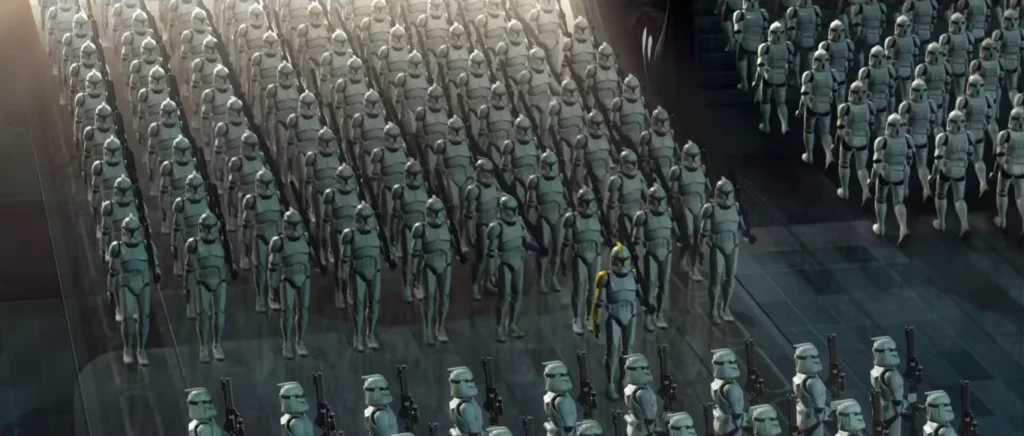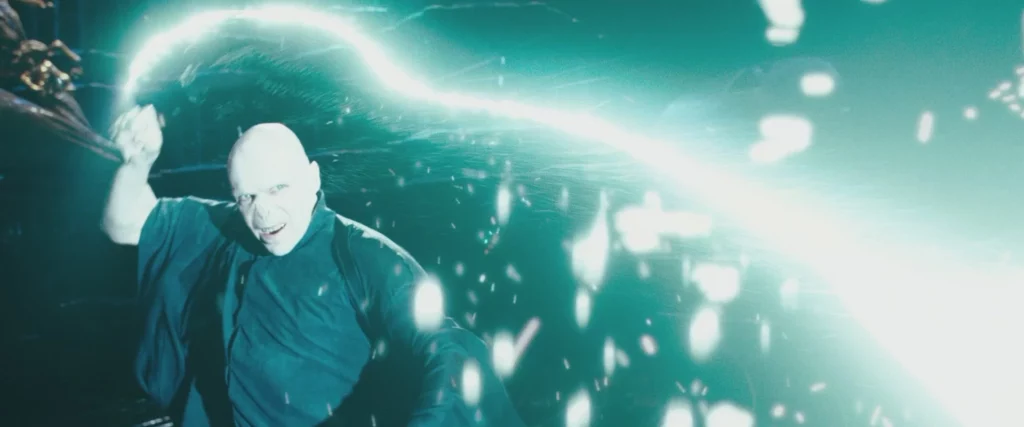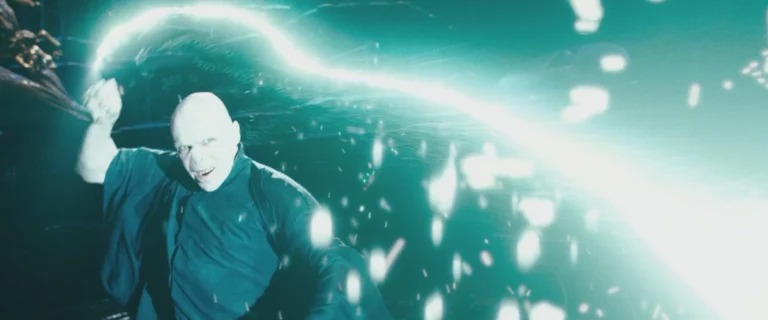“Why did the Clone Troopers betray the Jedi?” is a question that delves into one of the most pivotal moments in Star Wars lore. The betrayal, known as Order 66, saw the execution of Jedi by those who had fought alongside them throughout the Clone Wars. The core reason for this betrayal lies in the implantation of inhibitor chips within the clones, which forced them to follow the order without question. This orchestration by Emperor Palpatine ensured the elimination of the Jedi, consolidating his power and transitioning the Republic into the Galactic Empire.
Order 66 was not just a sudden command; it was the culmination of intricate planning by Palpatine, who had manipulated the entire Clone Wars to his advantage. The Clone Troopers, despite their loyalty and camaraderie with the Jedi, had no choice but to comply due to the control chips implanted in their brains. These chips were designed to override their free will, making the command unavoidable.
While the majority of clones followed through with Order 66, there were notable exceptions. Some, like Captain Rex and a few others, managed to remove or resist the influence of the control chips. Their stories highlight the complexity of the clones’ situation and underscore the tragedy of the Jedi Purge. The fallout from this event reshaped the galaxy and set the stage for the rise of the Empire.
Key Takeaways
- Inhibitor chips forced Clone Troopers to betray the Jedi.
- Order 66 was a meticulously planned move by Emperor Palpatine.
- Some clones resisted the command, showcasing the event’s complexity.
Historical Context of the Clone Wars
The Clone Wars were a galaxy-spanning conflict that reshaped the political and military landscape of the Star Wars universe. This section delves into the roots of the conflict, the rise of Chancellor Palpatine, and the hidden machinations of the Sith.
The Galactic Republic and Confederacy Conflict
The Clone Wars, lasting from 22 to 19 BBY, marked a significant conflict between the Galactic Republic and the Confederacy of Independent Systems (CIS).
The Galactic Republic was an expansive government, representing a multitude of star systems. Civil unrest and political instability led to the rise of the Confederacy, which seceded from the Republic, citing corruption and inefficiency.
Clone troopers played a pivotal role in this conflict, as they were created to serve the Republic. Their mass production was authorised by the Jedi Master Sifo-Dyas and the Kaminoans engineered them to be formidable soldiers, superior to battle droids.
The Clone Wars swiftly spread across numerous star systems, with each side fielding vast armies, leading to widespread destruction and suffering.
Chancellor Palpatine’s Rise to Power
Chancellor Palpatine was a cunning and ambitious politician who expertly manipulated the political landscape to his advantage.
Initially a humble senator from Naboo, Palpatine carefully orchestrated his ascension to the position of Supreme Chancellor. Using the crisis of the Naboo blockade as a catalyst, he gained the trust of the Senate.
Once in power, he leveraged the fear and chaos brought about by the Clone Wars to consolidate more control.
He instituted emergency powers, granting him dictatorial authority under the pretence of protecting the Republic. His ultimate goal was to transform the Republic into the Galactic Empire, with himself as its emperor.
The Sith’s Hidden Agenda
At the heart of the Clone Wars was a Sith plot to annihilate the Jedi Order and seize control of the galaxy.
Darth Sidious, the Sith identity of Palpatine, manipulated both sides of the war. He created the conflict to facilitate a purge of the Jedi and to position himself as the sole ruler.
Key events like the initiation of Order 66 showcased the culmination of his plans. This order commanded clone troopers to turn on the Jedi, who were seen as traitors.
Sidious’s apprentice, Darth Tyranus (Count Dooku), also played a crucial role in rallying systems to the Confederacy, further deepening the conflict and enabling Sidious’s ultimate victory.
The Clone Army

The Clone Army, pivotal to the Galactic Republic’s military, was a formidable force created and meticulously trained for specific purposes. This section explores their creation, training, and the crucial role of the inhibitor chips and contingency orders that influenced their actions.
Creation and Purpose of Clone Troopers
The Clone Troopers were created on Kamino, an isolated planet famous for its advanced cloning technology. Commissioned by Jedi Master Sifo-Dyas, and secretly manipulated by Sith Lord Darth Sidious, the purpose was to build a loyal, combat-ready army for the Galactic Republic.
The Kaminoans used the genetic template of Jango Fett, a renowned bounty hunter, ensuring the clones had exceptional combat skills and loyalty. The Clone Army was known as the Grand Army of the Republic, intended to fight the Separatist Droid Army during the Clone Wars.
Training and Programming of Clones
Clone Troopers underwent rigorous training from a young age. The Kaminoans implanted them with intensive military tactics and combat skills. They were trained to follow orders without question and to exhibit unwavering loyalty to the Republic and its leaders.
The clones’ programming was designed to create soldiers capable of performing complex battle strategies under extreme conditions. Their training included not only physical conditioning but also mental resilience and technical expertise in various forms of warfare.
Inhibitor Chips and Contingency Orders
A crucial factor in the Clone Troopers’ eventual betrayal of the Jedi was the implantation of inhibitor chips in their brains. These chips were designed by Sith Lord Darth Sidious to ensure absolute control over the clones’ actions. The most significant contingency order implanted through these chips was Order 66.
Order 66 directed the clones to execute their Jedi commanders, whom they had served loyally for years. This order was activated by Emperor Palpatine, triggering an automatic response from the clones. The inhibitor chips suppressed any personal feelings or resistance, compelling the Clone Troopers to turn against the Jedi without hesitation.
Order 66 Explained
Order 66 was a pivotal and devastating moment in the Star Wars universe, orchestrated by Supreme Chancellor Palpatine to eliminate the Jedi Order. This section explores how the order was activated and the crucial involvement of Darth Sidious and the Sith.
Activation of Order 66
Order 66, also known as Clone Protocol 66, was a clandestine directive programmed into the clones’ behavioural modification biochips. When activated, it identified all Jedi as traitors to the Galactic Republic and mandated their immediate execution by the Grand Army of the Republic.
The clones, despite their loyalty and camaraderie with the Jedi, were left with no choice due to the biochips planted in their brains by the Kaminoans. These biochips effectively stripped them of free will when Palpatine, under his Sith identity Darth Sidious, issued the command.
The phrase “Execute Order 66” triggered an instant and uncontrollable response from the clone troopers, ensuring the successful and widespread execution of the Jedi, often catching them completely off guard.
Role of Darth Sidious and the Sith
Darth Sidious, the Sith Lord alter ego of Supreme Chancellor Palpatine, masterminded the plot to annihilate the Jedi as part of a larger plan to establish the Galactic Empire and secure Sith dominance. Using his political power and Sith mastery, Sidious rose through the ranks of the Republic, all the while orchestrating wars and crises to consolidate his authority.
The Dark Side of the Force played a vital role in Sidious’ plan. His deep understanding and manipulation of the dark arts allowed him to deceive and corrupt, hiding his true intentions until the moment to strike was perfect.
Order 66 was not merely a tactical move but a strategic masterstroke by Sidious, who exploited the clones as pawns in his bid for absolute power. The execution of this order marked the near-complete eradication of the Jedi Order, cementing Sidious’ transition from chancellor to the Emperor of the newly formed Galactic Empire.
The Fall of the Jedi Order
The Jedi Order’s collapse resulted from a carefully orchestrated plan, executed primarily through Order 66. This led to the near-extinction of the Jedi and the rise of the Sith’s control over the galaxy.
The Jedi Purge
Order 66 was a directive issued by Emperor Palpatine, compelling clone troopers to eliminate the Jedi. This order was embedded within the troopers’ genetic programming, ensuring immediate and unquestioning obedience. The operation was swift and lethal, catching many Jedi off guard. Jedi Masters were targeted across various battlefronts, often killed by their own troops. The purge extended beyond battlegrounds to temples and other Jedi strongholds.
The clones’ actions were crucial to the extermination process. The Jedi, who had fought alongside these troopers, faced sudden and brutal betrayals. Many Jedi were overwhelmed by the sheer number and coordination of the clones. The efficiency of the clones in carrying out Order 66 marked the beginning of the Sith’s dominance and the effective end of the Jedi Order as it was known.
Immediate Aftermath and Jedi Survivors
In the wake of the Jedi Purge, only a few Jedi managed to escape. Survivors included prominent figures like Obi-Wan Kenobi and Yoda, who went into hiding to evade capture. They used secretive methods and underground networks to stay hidden. These survivors played crucial roles in preserving the Jedi’s teachings and legacy.
The aftermath saw the galaxy under the totalitarian rule of the Sith. Palpatine, now Emperor, leveraged the chaos to consolidate his power. The remaining Jedi faced continuous threats, as bounty hunters and Imperial agents relentlessly pursued them. Despite these efforts to completely eradicate the Jedi, pockets of resistance persisted, guided by the surviving Jedi Masters.
Individual Accounts of Betrayal
The betrayal of the Jedi by clone troopers under Order 66 featured pivotal moments and personal stories that marked the downfall of the Jedi Order. Key figures on both sides exhibited impactful actions that shaped the course of the timeline.
Notable Clones and Their Actions
Captain Rex, serving closely with Anakin Skywalker and Ahsoka Tano, managed to resist the order. He was pivotal in sidestepping his programmed commands after Ahsoka removed his inhibitor chip, showcasing a rare defiance among the clones.
On the other hand, Clone Commander Cody, serving under Obi-Wan Kenobi, immediately acted on the order and attacked his Jedi General without hesitation, embodying the widespread compliance seen in the clone ranks.
Other notable actions include the trooper Fives, who uncovered the existence of the inhibitor chips that controlled clone behaviour. He attempted to expose the truth but was ultimately silenced, epitomising the tragic cost of loyalty and obedience bred into the clones.
Stories of Jedi Resistance and Escape
Ahsoka Tano exhibited remarkable resilience, evading her own troops after they turned against her. Working alongside Rex, she orchestrated a daring escape, preserving a vital link to the Jedi lineage.
Caleb Dume (later known as Kanan Jarrus), a young Padawan, also managed to escape the initial onslaught thanks to the sacrifice of his Master, Depa Billaba. His survival added to the thin ranks of surviving Jedi.
Obi-Wan Kenobi, initially caught off guard by the betrayal, managed to escape after a fierce battle on Utapau. His survival played a crucial role in continuing the Jedi legacy and mentoring Luke Skywalker.
Stories of survival can also be found in those like Yoda, who, suspecting treachery, swiftly neutralised the clones around him and fled into exile, awaiting a future opportunity to fight back.
Impact on Galactic History
The betrayal of the Jedi by the clone troopers was a pivotal moment that significantly reshaped the political and social landscape of the galaxy. This event precipitated the transition from the Republic to the Empire, left a lasting legacy for the clones within the Empire, and greatly influenced cultural memory and oral histories.
Transition from Republic to Empire
The execution of Order 66 marked the beginning of the end for the Galactic Republic. The assassination of the Jedi, who were seen as protectors of peace and justice, facilitated the rise of Emperor Palpatine and the establishment of the Galactic Empire. By eliminating the Jedi, Palpatine faced little resistance in consolidating his power and restructuring the Republic into a totalitarian regime.
The rapid shift in governance was made possible by extensive planning and manipulation by Palpatine. He used the war and the Jedi as scapegoats to rally support for his new political order. The transformation from Republic to Empire created an environment marked by fear, suppression, and control that would last for decades.
The Legacy of the Clones in the Empire
With the rise of the Galactic Empire, the role of the clone troopers evolved significantly. Initially bred and trained for loyalty, the clones became an instrumental part of the new regime’s military power. Under the Empire, they transitioned into stormtroopers, continuing their service but now enforcing the Emperor’s will.
The clones maintained a complex legacy within the Empire. While many continued to serve faithfully, others like Captain Rex resisted or questioned their loyalty due to their forced betrayal of the Jedi. This internal conflict further shaped the narrative of loyalty and obedience within the Empire. George Lucas’s Star Wars franchise explores these dynamics extensively, particularly in animated series like The Clone Wars and Rebels.
Cultural Memory and Oral Histories
The treachery of the clone troopers against the Jedi left an indelible mark on cultural memory and oral histories throughout the galaxy. Stories of bravery, betrayal, and survival circulated among various planetary populations. These narratives helped to frame the Jedi as martyrs and the clones as tragic figures manipulated by larger forces.
The cultural memory of these events influenced subsequent generations, notably within the Rebel Alliance and the later emergence of the First Order. In lore, the clones’ actions during the fall of the Republic and the rise of the Empire became defining moments. The storytelling preserved in various mediums, including books, series, and films, served to keep the history alive, demonstrating the immense impact on galactic history.
Representation in Star Wars Media
The betrayal of the Jedi by the clone troopers is represented across various forms of Star Wars media, providing different perspectives and insights. These depictions include animated series, films, novels, and comparisons between Disney Canon and the Star Wars Legends continuity.
Depiction in ‘Star Wars: The Clone Wars’
Star Wars: The Clone Wars offers a comprehensive look at the clones during the war. The series explores individual clone troopers, revealing their unique personalities and struggles. Episodes like “The Hidden Enemy” and the final season develop the inhibitor chip plotline, which forces clones to execute Order 66. The portrayal in The Clone Wars adds depth, showing the internal conflicts and loyalty issues faced by the clones.
The Clone Wars in Film and Novels
In Revenge of the Sith, the betrayal is depicted as immediate and absolute. The clone troopers seamlessly transition from allies to enemies following Order 66. Novels such as Karen Traviss’s Republic Commando series delve into the lives of the clones, expanding on their relationships with the Jedi and each other. These novels add layers to their obedience and autonomy, offering deeper narrative elements absent from films.
Contemporary Views in Disney Canon vs Legends
Under Disney Canon, the narrative continues to evolve. Disney+ series like The Bad Batch show the aftermath of Order 66, focusing on clones who resisted the inhibitor chip’s effects. In contrast, the Star Wars Legends (previously Expanded Universe) continuity provides alternative stories where some clones actively resist against the Emperor.
Philosophical and Ethical Considerations
The betrayal of the Jedi by the clone troopers raises significant philosophical and ethical questions, particularly concerning free will, morality, and the role of the clones as both victims and perpetrators.
The Concept of Free Will Among Clones
The issue of free will is central to the actions of the clone troopers. Clones were genetically engineered and implanted with inhibitor chips, designed to ensure loyalty and compel obedience to Order 66.
These chips override the clones’ autonomy and remove their capacity for independent decision-making. The Clone Wars series often depicts individual clones exhibiting unique personalities, but the activation of Order 66 forces a sudden and involuntary betrayal of the Jedi, raising questions about their ability to exercise free will under such conditioning.
The Morality of the Jedi and Republic Actions
Both the Jedi and the Republic played complicated roles in the ethical landscape of the Clone Wars. The Jedi, known for their moral and ethical stance, accepted the use of a cloned army without much public debate on its ethical implications. The Republic commissioned the creation of these clones, inherently treating them as tools of warfare rather than sentient beings with rights.
This acceptance reflects a moral quandary, as the Republic utilised beings engineered for combat while failing to address their personhood. The ethicality of using cloned individuals for war—without consent and under conditions of imposed loyalty—is a subject of critical scrutiny.
Clones as Victims or Perpetrators
The clone troopers occupy a complex space between victimhood and perpetration. On one hand, they are victims of genetic manipulation and inhibitor chips that rob them of their free will. On the other hand, as soldiers who actively participated in the execution of Order 66, they are complicit in the resulting devastation for the Jedi Order.
This dual role complicates their moral assessment. The clones are portrayed both as loyal soldiers adhering to their programming and as individuals who suffer the consequences of actions they did not fully control. This dichotomy highlights the intricate ethical challenges in evaluating their roles during the tragic events of Order 66.
Through these perspectives, the narrative of the Clone Wars delves into broader questions about autonomy, ethical warfare, and the intersection of victimhood and responsibility.
Frequently Asked Questions
This section addresses common queries related to the betrayal of the Jedi by the clone troopers during Star Wars’ Order 66.
Why did the clones follow Order 66?
The clones followed Order 66 because it was a command issued by Supreme Chancellor Palpatine. This order activated bio-chips implanted in their brains, programming them to perceive the Jedi as traitors and to eliminate them without question.
How many Jedi managed to survive the execution of Order 66?
Few Jedi survived the execution of Order 66. Estimates suggest that around 100 to 200 Jedi managed to escape the initial purge. Known survivors include Yoda, Obi-Wan Kenobi, and Ahsoka Tano.
Why were the Jedi willing to utilise the Clone army?
The Jedi utilised the Clone army because they were essential in combating the massive droid armies of the Separatists. The Republic needed an army, and the clones provided a ready-made solution. Additionally, the Jedi believed they had no reason to distrust the clones at the time.
What became of the clone troopers subsequent to Order 66?
Subsequent to Order 66, clone troopers continued to serve the newly formed Galactic Empire. Over time, they were gradually replaced by stormtroopers as the Empire shifted to using regular human recruits and conscripts.
In which episode of the Clone Wars does Order 66 take place?
Order 66 is prominently featured in Star Wars: Episode III – Revenge of the Sith. Additionally, the final season of Star Wars: The Clone Wars also provides a detailed depiction of the events surrounding Order 66.
Did any clone troopers resist carrying out Order 66?
Yes, a few clone troopers resisted Order 66. Notably, Captain Rex and a small number of others who managed to remove or deactivate their bio-chips defied the order, allowing them to retain their free will and not turn against the Jedi.









